As the initiator of world’s largest 5G network co-construction and sharing strategy, China Telecom and China Unicom have recently jointly invited AsiaInfo as the main vendor to lead the catalyst project “Inception: Digital Twins for 5G Network Infrastructure Sharing” of 2020 global TMForum Digital Transformation World, to build an advanced digital operation system for the co-construction and sharing of new 5G infrastructure.
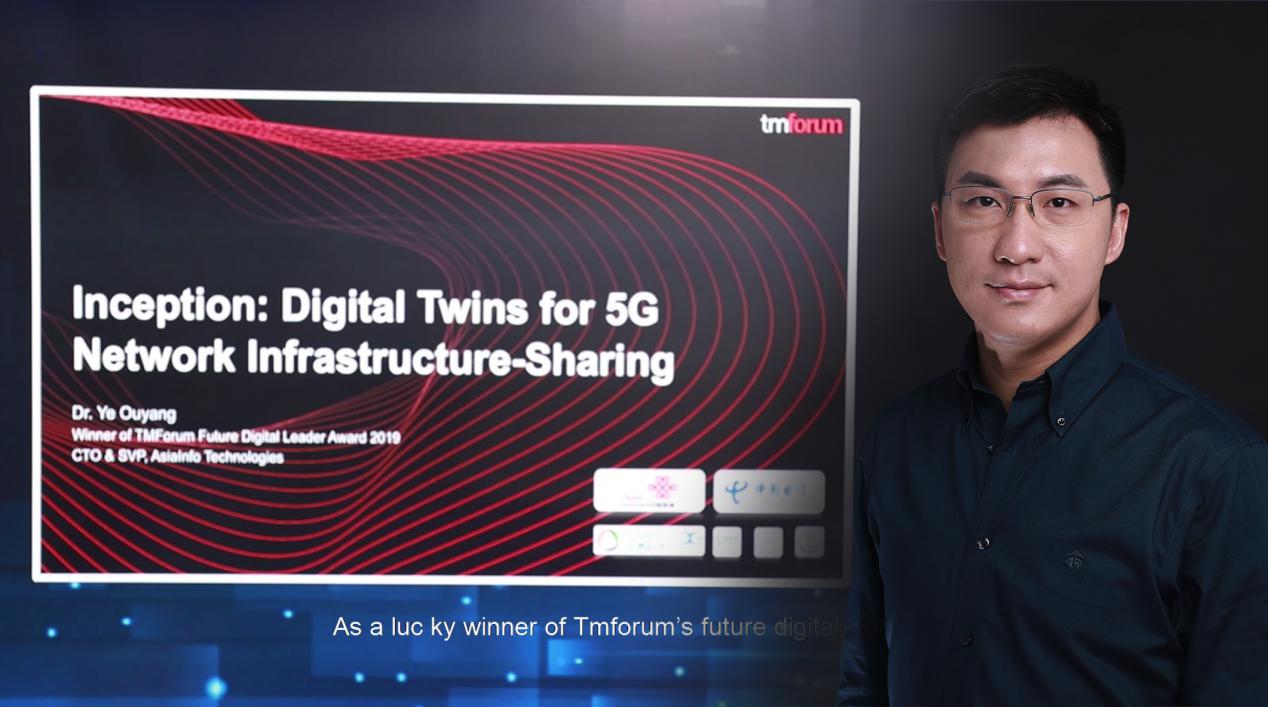
(The photo shows Dr. Ouyang Ye, CTO of AsiaInfo, gave a keynote speech on “5G Artificial Intelligence + Digital Twins Promote the Co-construction and Sharing of Operators” on behalf of China Telecom, China Unicom, AsiaInfo and other joint partners on TMForum)
Precise planning for co-construction and sharing
Traditional network planning uses desktop-based simulation software to extract data and run simulation formulas in the software, and finally present the planning results in a GIS map. Such offline mode is mostly built on the simulation of the radio frequency layer and the network layer, and does not provide the user experience of mapping on the network application layer. AsiaInfo constructs a 5G digital twins system based on network twins, customer twins, and space twins. It realistically simulates the 5G physical world, digitizes events in the physical world in real time, and adds AI into the twin space, which uses the way of 5G twins + communication artificial intelligence to help operators plan the capacity and performance of the co-construction and sharing network in a more accurate manner.
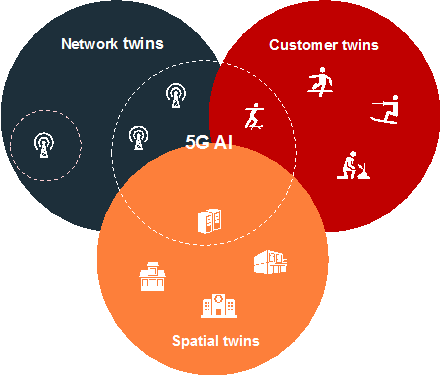
Privacy protection for co-construction and sharing
In co-construction and sharing, a prisoner’s dilemma is how to realize the co-construction and sharing of networks and business operations in the form of isolated data island, while protecting the privacy of the data of both parties?
AsiaInfo successfully applied the up-to-date federated learning technology in artificial intelligence. On the premise of protecting the data privacy of two operators, AsiaInfo Artificial Intelligence Laboratory uses horizontal and vertical federated learning algorithm systems to conduct 5G network traffic simulation, performance simulation and user experience simulation. The results of the joint simulation have been imported into the co-construction and operation platform, and further transformed into the business decision-making for the co-construction and sharing of 5G network infrastructure of two operators.
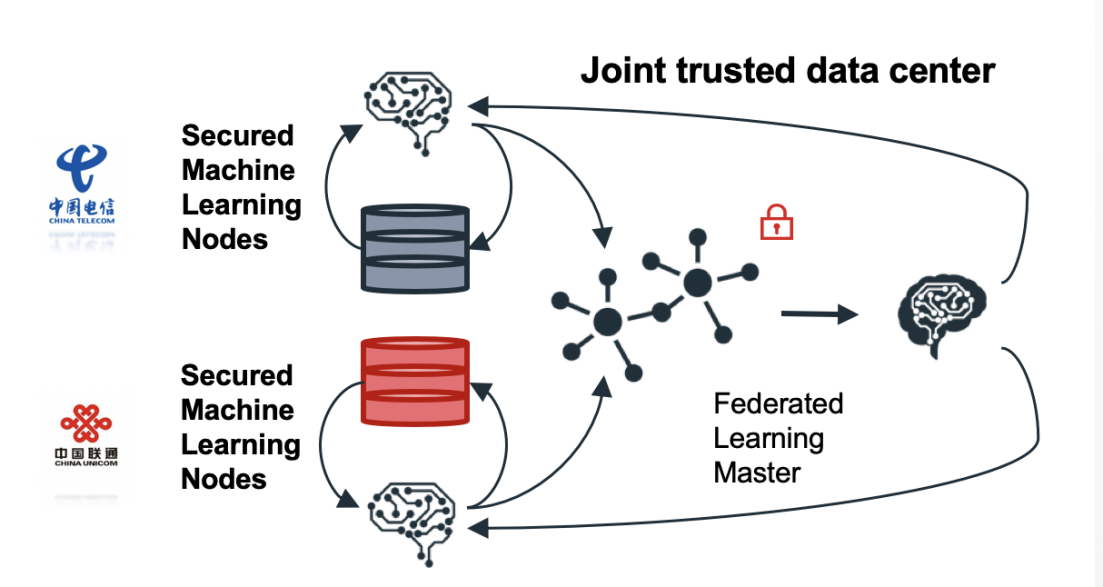
Collaborative operation for co-construction and sharing
Based on the digital twin system of 5G AI, AsiaInfo not only effectively connects the network domain and business domain within the same operator, but also opens up cross-operator network co-construction and sharing through federated learning. This enables operators to finally be customer-focused, build a collaborative network management platform to operate the shared network throughout the life cycle, and efficiently enhance the development of 5G services.
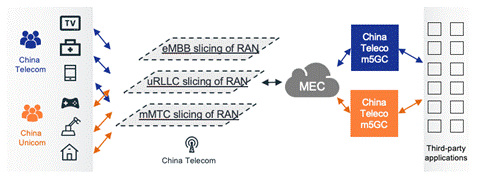
From co-construction and sharing to better urban governance
The role of AI and digital twins in co-construction and sharing can be extended by operators to smart urban governance in the future. The combination of AI+ digital twins technology with abundant big data can be applied in a series of new types of operation in urban digital transformation, such as urban governance, resource optimization, and public security monitoring.
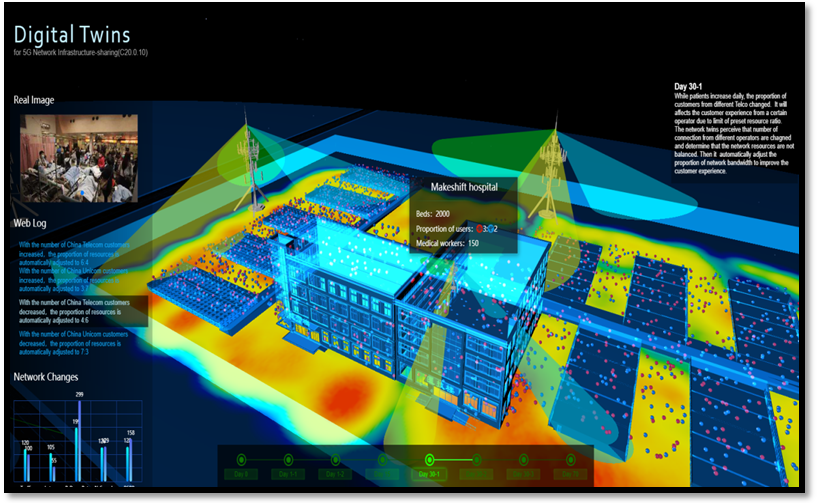
5G urban digital twin platform of AsiaInfo
The smart city solution of AsiaInfo based on the digital twins aims to recreate a corresponding “virtual world” in cyberspace by digitizing all elements of the physical world such as people, objects and events, forming a coexistence with the real world in the physical dimension and the integration between virtuality and reality. Through twin instances of spatial objects, resource facilities, etc., the association mapping with the perception layer of the Internet of Things can be realized. Driven by data and models, a new manufacturing model supported by digital twins and digital threads can be built, thus becoming the technology basis for smart city construction.
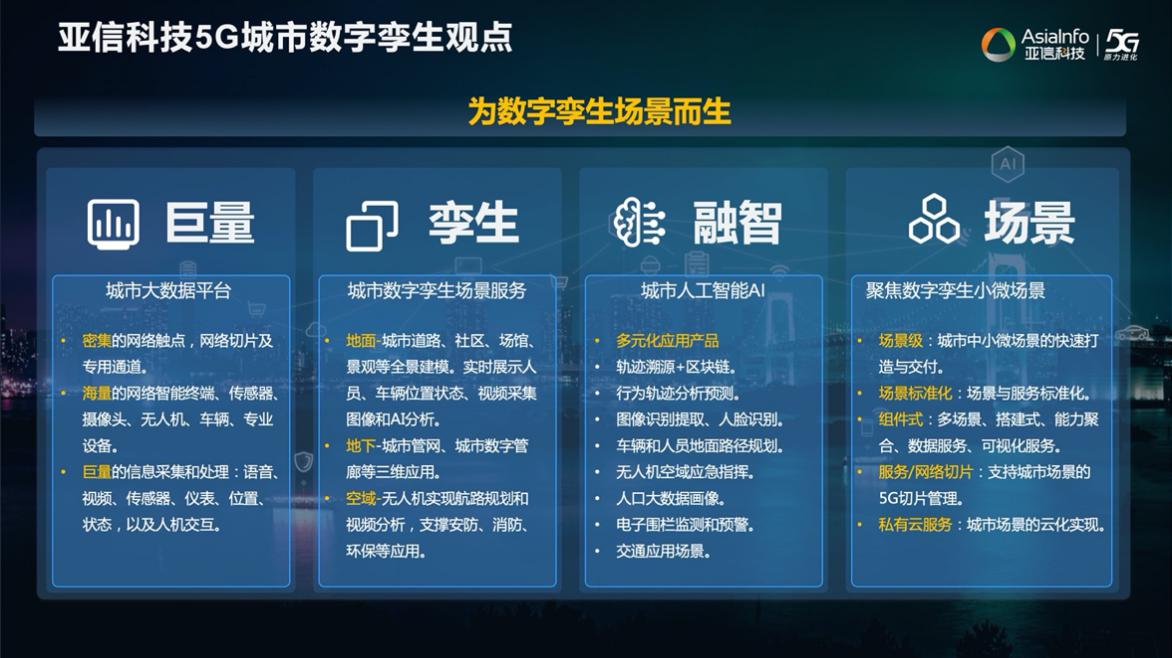
AISWare AICity, the 5G urban digital twin platform of AsiaInfo, can enable the “virtual world” to perceive changes in the “real world” in a timely and rapid manner, but more importantly, it can integrate all-round functions of geometric modeling, simulation and data analysis to empower the decision-making analysis of urban management. It has the ability to quickly analyze the correct information from complex and multi-source data at the correct time, and make the correct response to inform the correct object.
We conduct digital twin modelling to all the people, environments, buildings, vehicles, facilities, pipe corridors, etc. in cities one by one to realize the simulation and visualization of information, trajectory tracking of objects, and operation monitoring of facilities. The simulation trial and error and simulation operation in the virtual world is realized so as to recognize the whole through observation of the part. Through the digital twin technology, serving reality via virtuality and the ability to simulate decision-making can be satisfied, so as to realize the smart urban management in a true sense. The construction of digital twin cities will lead to disruptive innovations in smart urban management and services.
Communications AI platform of AsiaInfo
AISWare AI^2, the communication AI platform of AsiaInfo, is an infrastructure used to build large-scale intelligent services. As the hub of intelligence middle-ground of enterprises, it can provide step-by-step construction of algorithm models and full life cycle management services for the intelligence transformation of enterprises, and can help enterprises continuously accumulate their businesses into algorithm models to achieve the purpose of reuse, combination innovation, and large-scale construction of intelligent services. The product has been widely used in telecommunications, finance, transportation, energy and other industries, with more than 30 provincial customers. Thousands of AI models of typical customers have been dealt through this platform, with an average of 60 million intelligent service calls per month.









